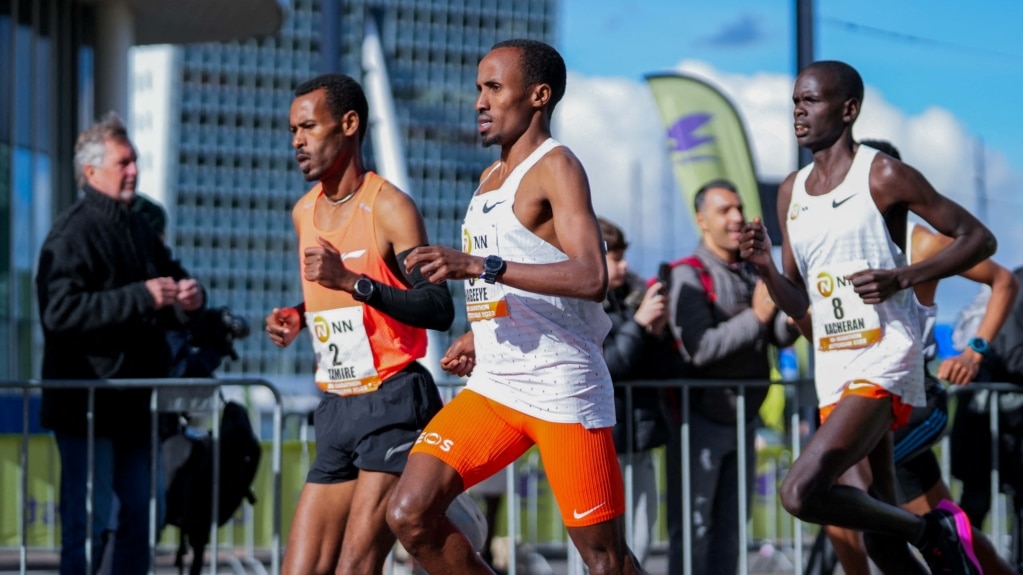Medical device companies Abbott and Dexcom make small devices that attach to the skin and monitor the amount of glucose, or sugar, in the blood.
These devices were first made to help people with diabetes. Diabetes is a medical condition that prevents the body from properly digesting sugar and turning it into energy.
The devices permit people to make changes to their diet or take medication such as insulin to help control their glucose levels.
But the devices are also being used by some Olympic athletes. The monitors help runners and swimmers learn how the food they eat affects their energy level.
Dutch long-distance runner Abdi Nageeye is paid to wear a device made by Abbott. Nageeye was the silver medal winner at the Tokyo Olympics. He will try to get another medal during this summer’s Olympics in Paris, France. The Games begin on July 26.
Nageeye pays attention to his sleeping and eating each day. So, it makes sense that he would pay attention to the sugar in his blood. “That's your energy, actually, that's your fuel. We have to monitor that," said Nageeye
The information that comes from the monitor helps Nageeye get closer to an “effortless” or stress-free run.
The devices are called continuous glucose monitors, or CGMs. In the past, they required a prescription from a medical doctor. But now, although there is no official proof that the devices help with athletic performance, the companies that make them are getting permission to sell them to regular people.
"I do see a day where CGM is certainly going to be used outside of diabetes in a big way," said Dexcom's Chief Operating Officer Jacob Leach.
In March, the U.S. gave Leach’s company permission to sell its Stelo device without a prescription. It is expected to go on sale this summer.
Abbott pays Kenyan marathoner Eliud Kipchoge to wear its device. He has won the last two Olympic marathons. He uses the device to monitor his calories and the intensity of his workouts.
Abbott said its device, called Libre Rio, will also be available soon without a prescription.
Both companies saw sales growth of over 20 percent for their wearable CGMs for diabetes patients in 2023. A research company called GlobalData sees the growth continuing at a rate of 15 percent per year through 2031, as more people become interested in using the devices to help with weight loss.
Sports researcher Filip Larsen sees the CGMs as a way to better understand the exertion levels of serious athletes. Larsen is a professor at the Swedish School of Sport and Health Sciences.
"A big guesswork for endurance athletes has always been: am I training hard enough or am I training too hard? It seems with CGMs, we have a better understanding," he said.
Larsen also works with a company called svexa, which researches sports performance. He has already examined CGM data from some athletes and sports teams. Larsen notes there is little proven science about how to help athletes perform better using the data that comes from the monitors.
"Most researchers cannot give you the exact answers. In five years, we will know 10 times as much as we do now,” he said.
But the possibility of finding important data means many people are looking into monitoring blood glucose.
Greg Cox is a sports dietician and associate professor at Bond University in Australia. He works with swimmers, rowers and track and field athletes.
Cox said a recent test of top athletes proved inconclusive. The test restricted an athlete’s calories before an intense exercise session.
He and Larsen said they were unsure how valuable a CGM would be for a regular person who used it without medical supervision.
But for the companies that make the devices, the non-medical market is large. Abbott says it believes the CGMs will help people lead healthier lives with “improved energy, mood, focus, sleep.”
I’m Dan Friedell.

